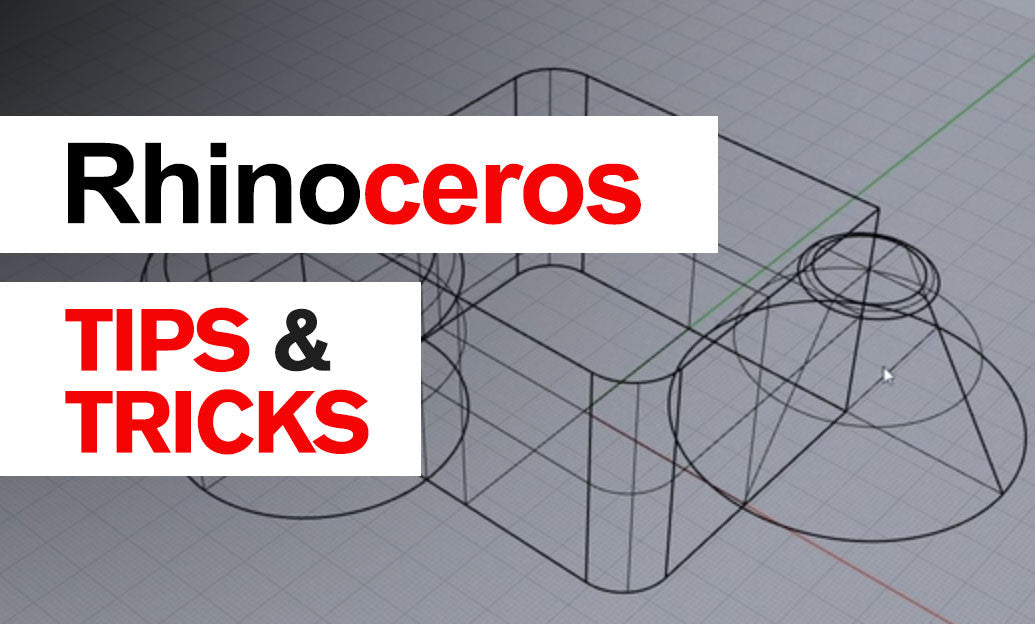Your Cart is Empty
Customer Testimonials
-
"Great customer service. The folks at Novedge were super helpful in navigating a somewhat complicated order including software upgrades and serial numbers in various stages of inactivity. They were friendly and helpful throughout the process.."
Ruben Ruckmark
"Quick & very helpful. We have been using Novedge for years and are very happy with their quick service when we need to make a purchase and excellent support resolving any issues."
Will Woodson
"Scott is the best. He reminds me about subscriptions dates, guides me in the correct direction for updates. He always responds promptly to me. He is literally the reason I continue to work with Novedge and will do so in the future."
Edward Mchugh
"Calvin Lok is “the man”. After my purchase of Sketchup 2021, he called me and provided step-by-step instructions to ease me through difficulties I was having with the setup of my new software."
Mike Borzage
Harnessing the Power of Advanced Parametric Design: Transforming Architecture, Engineering, and Product Development
August 22, 2024 4 min read


Introduction to Parametric Design
Parametric design is a methodology that utilizes parameters and algorithms to drive the shapes and forms of design. It has revolutionized the design process by introducing a level of flexibility and precision that was previously unattainable through traditional methods.
Historically, parametric design has its roots in the early days of computer-aided design (CAD) in the 1960s. Over the decades, it has evolved significantly, driven largely by advancements in computational power and software capabilities. Today, parametric design is an integral part of many design disciplines, from architecture to product design and engineering.
In the modern design landscape, parametric design is indispensable. Its ability to manage complex relationships between design elements allows for the efficient exploration of design alternatives and optimization. The key advantages of parametric design over traditional methods include enhanced precision, the ability to easily iterate and modify designs, and the facilitation of more innovative and complex forms.
Core Techniques in Parametric Design
Algorithmic Thinking
Algorithmic thinking forms the backbone of parametric design processes. It involves defining a set of rules or algorithms that dictate how design parameters interact with each other. This approach allows designers to generate complex forms and patterns that would be difficult to achieve manually.
Common algorithms used in parametric design include:
- L-system algorithms for generating fractals and plant-like structures.
- Voronoi diagrams for creating natural-looking partitioning and cell structures.
- Genetic algorithms for optimizing design solutions based on specific criteria.
Mathematical Foundations
Mathematics is central to parametric design, providing the necessary tools to define parameters and constraints. Key mathematical concepts utilized in parametric design include:
- Geometry: Essential for defining shapes, forms, and spatial relationships.
- Algebra: Used to create and manipulate parametric equations that govern design elements.
- Calculus: Important for optimization and understanding the behavior of parametric curves and surfaces.
By leveraging these mathematical foundations, designers can create highly precise and adaptable models that respond dynamically to changes in parameters.
Software Tools
Several leading software tools are available for parametric design, each offering unique features and capabilities. Some of the most prominent tools include:
- Rhino and Grasshopper: Rhino is a powerful CAD software, and Grasshopper is its visual programming language that allows for parametric modeling. Together, they provide a robust platform for creating complex, algorithm-driven designs.
- Autodesk Dynamo: An open-source visual programming tool for Revit, Dynamo is widely used in the architecture, engineering, and construction industries for creating parametric models and automating design tasks.
- SolidWorks: Known for its parametric and feature-based approach, SolidWorks is a popular choice in the engineering and product design industries.
These tools enable designers to explore and innovate by providing the flexibility to modify design parameters easily and generate complex geometries efficiently.
Applications and Case Studies
Architecture
Parametric design is reshaping architectural practices by enabling the creation of innovative and efficient building designs. Architects can use parametric tools to optimize building performance, enhance aesthetic qualities, and streamline the design process.
Examples of how parametric design is impacting architecture include:
- Optimizing structural systems to reduce material usage and improve stability.
- Designing responsive facades that adapt to environmental conditions for improved energy efficiency.
- Creating complex, organic shapes that would be challenging to design manually.
Engineering
In engineering disciplines such as aerospace and automotive, parametric design plays a crucial role in developing high-performance products. Engineers use parametric tools to iterate designs rapidly, optimize performance, and ensure manufacturability.
Real-world applications in engineering include:
- Designing aerodynamic surfaces for aircraft and automobiles to reduce drag and improve fuel efficiency.
- Creating lightweight structures using generative design techniques to optimize material distribution.
- Automating repetitive design tasks to increase productivity and reduce human error.
Product Design
In the realm of consumer product design, parametric techniques are driving innovation and customization. By leveraging parametric tools, designers can create products that are tailored to individual needs and preferences.
Success stories in product design include:
- Developing customizable furniture that can be adjusted to fit different spaces and user requirements.
- Creating ergonomic products that adapt to the unique characteristics of each user.
- Utilizing additive manufacturing to produce complex geometries and reduce material waste.
Future Trends and Challenges
Emerging Technologies
The future of parametric design is closely tied to emerging technologies such as artificial intelligence (AI), machine learning, and the Internet of Things (IoT). These technologies have the potential to further enhance the capabilities of parametric design by enabling more intelligent and adaptive design processes.
Potential impacts of future technologies include:
- AI and Machine Learning: These technologies can be used to analyze large datasets and generate optimized design solutions based on specific performance criteria.
- IoT: By integrating IoT devices, designers can create responsive environments that adapt to real-time data and user interactions.
Challenges and Limitations
Despite its many advantages, parametric design also faces several challenges and limitations. Common challenges include:
- The complexity of setting up and managing parametric models, which can require significant expertise and computational resources.
- Ensuring the interoperability of parametric models across different software platforms and design stages.
- The need for continuous learning and adaptation to keep up with rapidly evolving tools and techniques.
Addressing these challenges will require ongoing research and development, as well as collaboration across disciplines to develop more user-friendly and efficient parametric design workflows.
Skills and Education
The importance of education and continuous learning for designers cannot be overstated. As parametric design continues to evolve, designers must stay updated with the latest tools and techniques to remain competitive in the industry.
Resources for learning advanced parametric design techniques include:
- Online courses and tutorials offered by software providers and educational institutions.
- Workshops and conferences that provide hands-on training and networking opportunities.
- Books and research papers that cover the theoretical and practical aspects of parametric design.
Conclusion
In summary, advanced parametric design is revolutionizing the way we approach design across various disciplines. Its ability to handle complex relationships and optimize design solutions makes it an invaluable tool in the modern design toolkit.
As we look to the future, it is essential for designers to explore and adopt parametric design in their workflows. By embracing this powerful methodology, we can unlock new levels of creativity, efficiency, and innovation.
The future of parametric design is bright, with exciting opportunities and advancements on the horizon. By staying informed and continuously learning, designers can ensure they are well-equipped to take full advantage of the potential that parametric design offers.
Also in Design News

Rhino 3D Tip: Rhino to Real‑Time Engines: Clean Models, Optimized Meshes, Reliable Exports
December 07, 2025 2 min read
Read More
Cinema 4D Tip: Constraint-Based Animation with PSR, Parent, and Aim
December 07, 2025 2 min read
Read More
V-Ray Tip: Proximity Dirt and Wear Masks with VRayDistanceTex
December 07, 2025 2 min read
Read MoreSubscribe
Sign up to get the latest on sales, new releases and more …


